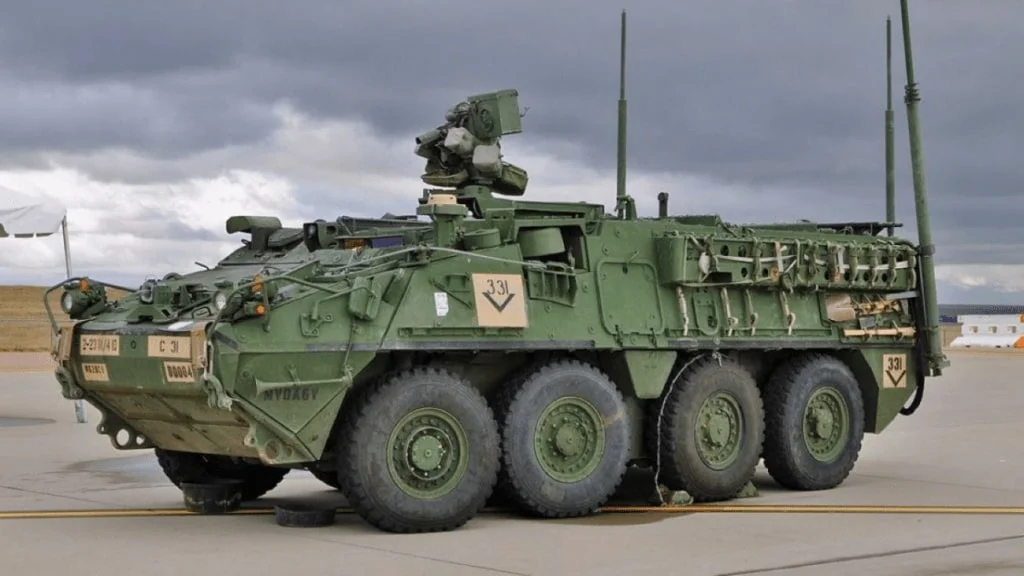
In recent years, the Indian Army has aimed to modernize its armored and mechanized forces through strategic acquisitions and indigenous development. Historically, procurement decisions have often revolved around acquiring cutting-edge foreign weapon systems. However, recent developments indicate a pragmatic shift away from reliance on foreign equipment, especially in light of the unsuccessful trials with some international platforms. Most notably, the Indian Army has decided to **ditch the US Stryker armored vehicle**, a vehicle that was initially seen as a promising addition to its armory.
This decision underscores a growing emphasis on **self-reliance and indigenous defense manufacturing**, with the Indian Army now turning its attention toward developing its own advanced warfare platforms. Central to this pivot is the focus on the **indigenous Warfare Equipment Platform (WhAP)**, an ambitious project aimed at fulfilling the Army’s modern combat needs through native technology and innovation.
The Stryker Controversy: Why Did India Back Away?
Failed Amphibious Trials and Their Consequences
The Taiwanese-origin US Stryker, which has seen extensive use by various allied forces, was evaluated by the Indian Army as a potential addition to its mechanized units. However, amid rigorous testing and trial phases, the platform failed to meet the expectations, particularly during amphibious trials. As noted in several defense reports, the Stryker’s performance in critical terrain and operational scenarios did not satisfy the Indian Army’s standards.
The amphibious trial failures exposed certain limitations, such as inadequate water-crossing capabilities and issues with terrain adaptability, which are crucial for India’s diverse operational environments. These shortcomings ultimately led the Indian Army to conclude that the platform was unsuitable for its operational needs.
- Inability to perform effectively in India’s varied terrains, including high-altitude regions and marshy borders
- Operational limitations in amphibious and cross-terrain missions
- Cost-efficiency concerns when considering the platform’s performance against indigenous alternatives
Strategic Shift Away From Imported Platforms
Following the unsuccessful trials, defense analysts and military officials alike have emphasized the importance of developing indigenous armored and armored vehicle platforms. The Indian defense sector has been under considerable pressure to reduce dependence on foreign military imports, especially amidst geopolitical tensions and the push for self-reliance (Make in India initiative).
Consequently, the Indian Army declared that it would not proceed with the procurement of the Stryker, citing the need for better-suited platforms that align with its tactical and operational requirements. Instead, the focus increasingly shifts to indigenous development, which offers greater customization, cost advantages, and strategic independence.
The Rise of Indigenous WhAP: A New Dawn in Indian Defense
What is the Indigenous WhAP?
The **Indigenous Warfare Equipment Platform (WhAP)** is conceptualized as an integrated combat platform designed to cater to diverse battlefield scenarios. It aims to incorporate cutting-edge indigenous technology in armor, weaponry, mobility, and electronic warfare systems. By focusing on indigenous design and manufacturing, the Indian defense industry hopes to produce platforms that are tailored to the unique operational requirements of the Indian Army.
Key Features and Objectives
The WhAP project encompasses several strategic objectives and technological features, including:
- High mobility with indigenous engines and transmission systems
- Enhanced protection using locally developed armor technologies
- Advanced fire control and weapon systems, including indigenous artillery and missile integration
- Modular design allowing for adaptability across different terrains and combat roles
- Cost-effectiveness and maintenance ease, ensuring sustainability in prolonged missions
Advantages of Indigenous Development
The shift towards indigenous platforms like the WhAP offers multiple benefits:
- Strategic Sovereignty: Reduced dependence on geopolitical rivals for defense hardware, ensuring operational security and autonomy
- Economic Growth: Boosts local manufacturing, innovation, and employment in the defense sector
- Customization & Flexibility: Tailoring platforms to specific operational needs of the Indian military
- Cost-efficiency: Lower procurement and maintenance costs compared to imported equipment
Progress and Future Outlook
The Indian defense industry has made significant strides in recent years, aiming to produce a range of indigenous armored vehicles and combat platforms. The WhAP project is positioned as a flagship initiative, symbolizing India’s commitment to self-reliance (Atmanirbhar Bharat). The government and private sector collaborations are expected to ramp up in the coming years, promising a new era of self-sufficiency in defense technology.
While traditional foreign procurements continue as part of India’s defense strategy, the emphasis on indigenous platforms like the WhAP signifies a fundamental paradigm shift. These platforms will eventually replace or complement imported systems, creating a balanced and resilient defense architecture.
Challenges and the Road Ahead
Despite the promising outlook, several challenges remain, including:
- Ensuring technological parity with international standards
- Overcoming delays in indigenous R&D and manufacturing processes
- Training personnel to operate and maintain new platforms effectively
- Scaling production to meet the large-scale operational needs of the military
Addressing these challenges will require sustained political will, increased investments in defense R&D, and fostering innovation within India’s defense industry ecosystem.
Conclusion
The Indian Army’s decision to **ditch the US Stryker** following unsuccessful amphibious trials marks a decisive step towards emphasizing indigenous defense capabilities. The focus now increasingly is on embedding advanced indigenous technology into platforms like the WhAP to secure India’s strategic interests. While hurdles remain, this strategic realignment promises to make India a global leader in defense manufacturing, capable of producing world-class, tailor-made military platforms.
Indigenous development is more than a necessity; it is a strategic imperative for India’s future security landscape. The evolution from reliance on imported systems to self-reliant defense solutions signifies a resilient and confident Indian military poised for future challenges.
For more updated news please keep visiting Prime News World.









